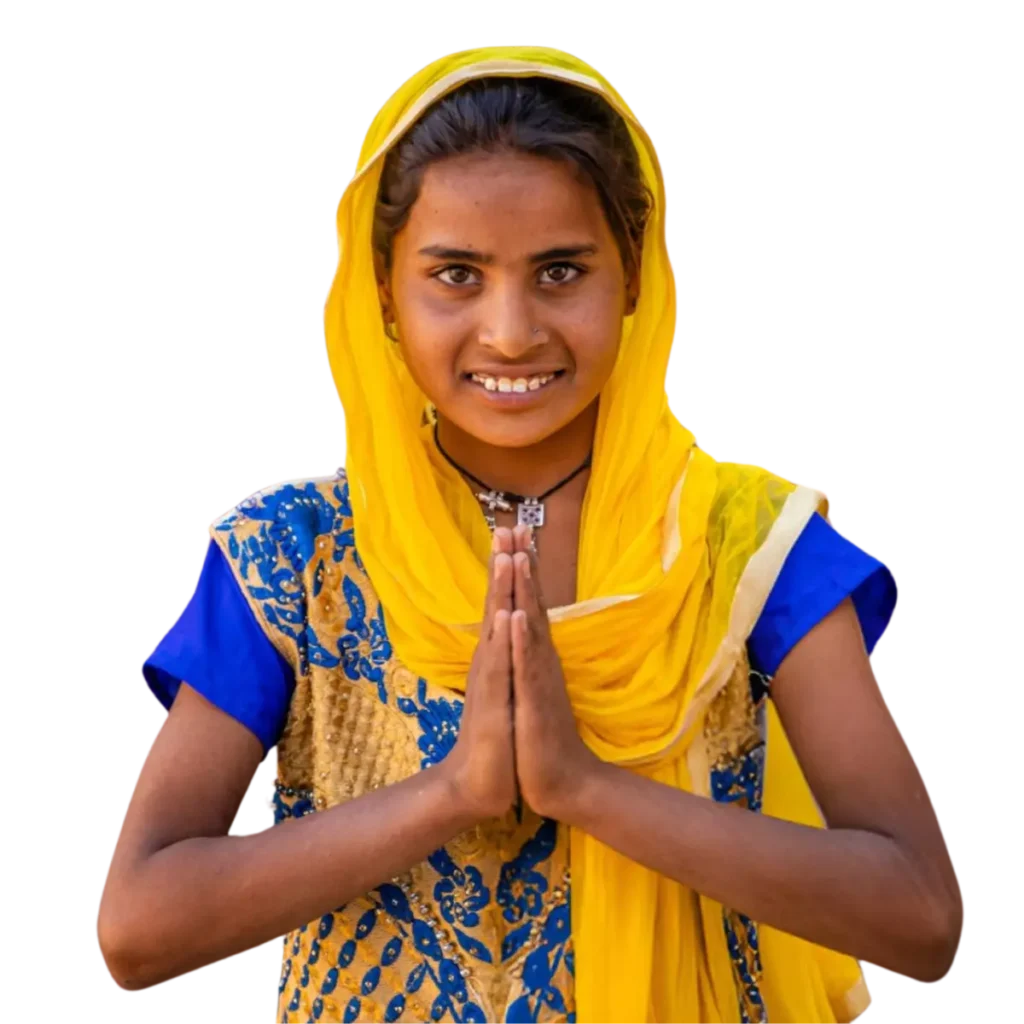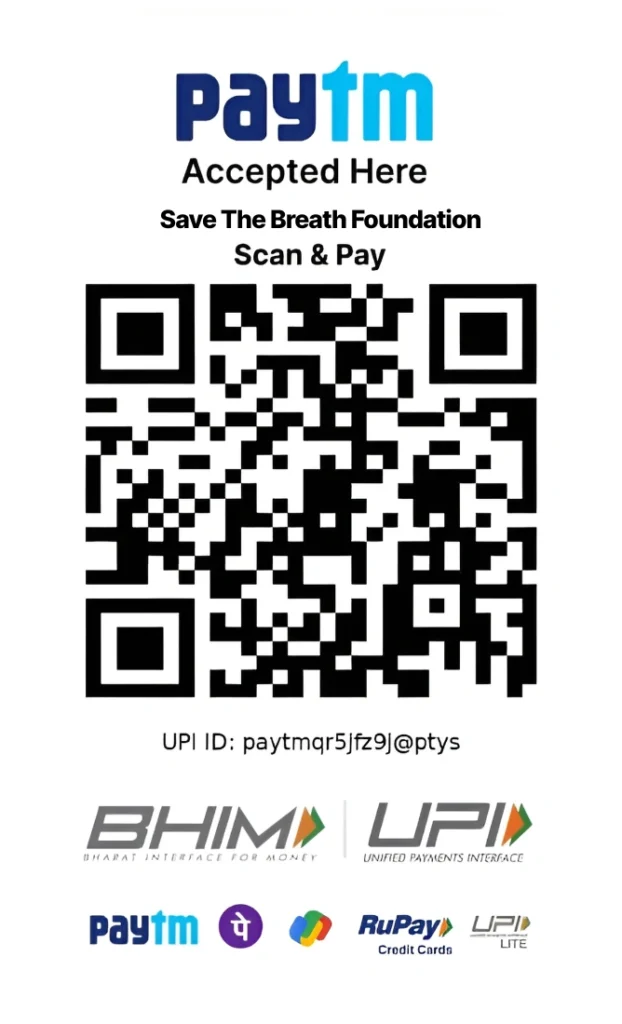Healing Communities, Building Hope
Free Healthcare for the Underprivileged
From rural villages to urban slums, we deliver medical care, health education, and preventive support to those left behind.

Our Mission & Vision
Save The Breath Foundation was born from a simple belief: healthcare is a human right, not a privilege. We envision an India where every child, mother, and elderly citizen—regardless of income, geography, or background—has access to quality medical services, hygiene education, and the tools they need to lead a healthy life.
Our Mission
Deliver sustainable healthcare solutions that break the cycle of poverty, reduce preventable diseases, and empower communities to take charge of their own health.
Our Vision
A future where no one is left behind by the healthcare system—a thriving nation of healthy, active citizens.
WHY HEALTH
The Challenge
India’s strides in economic growth have been remarkable, yet stark health disparities persist:
Malnutrition: Nearly 38% of children under five are stunted; 19.3% are wasted.
Maternal Health: India accounts for 12% of global maternal deaths.
Sanitation & Hygiene: Over 600 million people still lack access to basic sanitation.
Mental Health: Less than 15% of those in need receive any form of mental health support.
These numbers translate into deeper cycles of poverty: sick children miss school, undernourished mothers cannot care for their families, and entire communities are trapped in a relentless loop of preventable illness.
Why Invest in Child Health?
Foundation for Learning: Healthy children are more likely to attend and perform well in school.
Economic Gains: Reducing child malnutrition can boost India’s GDP by up to 10%.
Breaking the Cycle: Early interventions yield lifelong benefits—healthier adults, more productive workforces, and stronger communities.
By focusing on the youngest and most vulnerable, we plant the seeds for a healthier India tomorrow.
Our Approach
We believe holistic, community-led healthcare is the only path to lasting change. Our four-pillar model ensures that interventions are:
Integrated
We combine medical camps with nutrition, hygiene education, and livelihood support.
Participatory
Local health workers, teachers, and volunteers co-design and implement programs.
Data-Driven
Regular monitoring and impact evaluations guide resource allocation and program tweaks.
Sustainable
We build capacity within communities—training local health champions, establishing women’s micro-savings groups, and partnering with government clinics for continuity.
Core Interventions
Nutrition Support for Malnourished Children
Malnutrition weakens immunity, impairs cognitive development, and increases mortality risk. Our program includes:
Identification & Screening: Monthly growth-monitoring camps in villages and slums.
Therapeutic Feeding: Distributing nutrient-dense Ready-to-Use Therapeutic Food (RUTF) to children with Severe Acute Malnutrition.
Micronutrient Fortification: Iron, Vitamin A, and Zinc supplementation drives at anganwadis.
Nutrition Counseling: Engaging parents in cooking demos, local food gardens, and hygiene practices.
Immunization Drives & Preventive Healthcare
Vaccines are the most cost-effective public health intervention. We…
Coordinate with Govt. Clinics: Ensure cold-chain integrity and vaccine availability.
Outreach Sessions: Mobile immunization vans reaching remote hamlets.
Awareness Campaigns: Community meetings, street plays, and local radio spots to dispel myths.
Follow-up: Tracking defaulters and counseling caregivers.
Maternal & Child Health Camp
Pregnant and lactating mothers face risks from anemia, inadequate prenatal care, and postpartum complications. We provide:
Antenatal Check-ups: Ultrasonography, hemoglobin testing, and nutritional counseling.
Safe Delivery Kits: Clean birth kits for home deliveries in hard-to-reach areas.
Postnatal Visits: Monitoring mother and newborn for 6 weeks after birth.
Breastfeeding Support: Counselling on exclusive breastfeeding and lactation techniques.
Sanitation & Hygiene Awareness
Open defecation and poor hygiene drive diarrheal diseases and chronic infections. Through:
School WASH Programs: Building child-friendly latrines, hand-washing stations, and menstrual hygiene corners.
Community CLTS (Community-Led Total Sanitation): Triggering behavior change through participatory rural appraisal tools.
Hygiene Kits: Distributing soap, menstrual hygiene packs, and water purification sachets.
Train-the-Trainer: Empowering local women’s SHGs to spread hygiene messages.
Community Outreach & Engagement
Village Health Committees
We form committees of local leaders, teachers, ASHAs (Accredited Social Health Activists), and youth volunteers who:
Map health needs in their villages
Mobilize families for screenings and camps
Monitor progress and provide grassroots feedback
Urban Slum Partnerships
In cities like Delhi, Noida, and Mumbai, we collaborate with resident welfare associations and slum-dwellers’ federations to:
Open pop-up clinics in community centers
Employ local slum-residents as health navigators
Coordinate with municipal corporations for waste management
School & College Alliances
We believe in youth power. By partnering with local schools and colleges, we:
Train student ambassadors in health promotion
Organize inter-school sports meets to raise hygiene awareness
Involve college interns in data collection and storytelling
Digital & Media Outreach
To break language and literacy barriers, we’ve launched:
WhatsApp Helplines: Quick tips on nutrition, antenatal care, and mental health.
Local-Language Podcasts: Interviews with doctors, community champions, and beneficiaries.
Social Media Campaigns: #HealthyFuture, #SaveTheBreathStories—amplifying voices from the field.
Our Impact in Numbers
| Intervention | 2023–24 Reach | Outcome |
|---|---|---|
| Immunization Sessions Conducted | 45,000+ | 12% drop in severe acute malnutrition |
| Children Screened for Malnutrition | 320 | 98% coverage for DPT, Polio, Measles |
| Pregnant Women Received ANC Care | 8,750 | 85% delivered in safe settings |
| School WASH Upgrades | ||
| Adolescent Counseling Sessions | ||
| Community Health Workers Trained | Doe |


